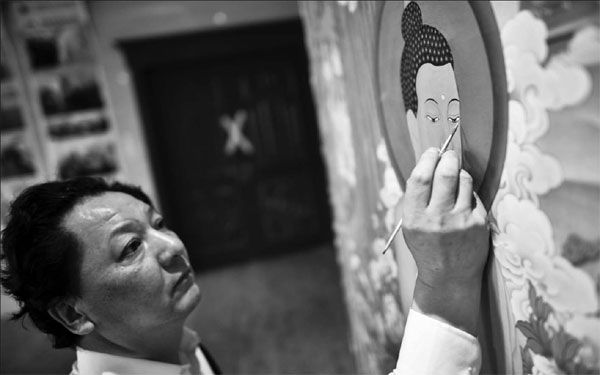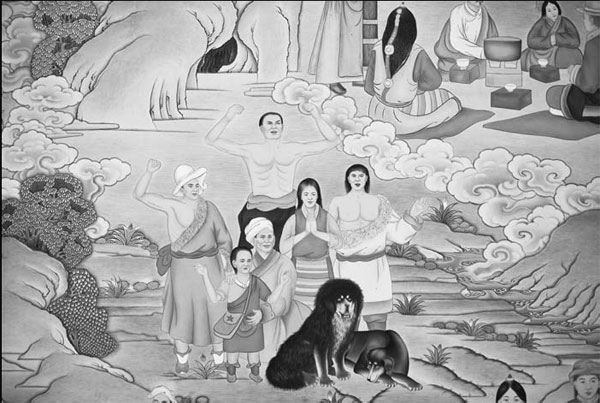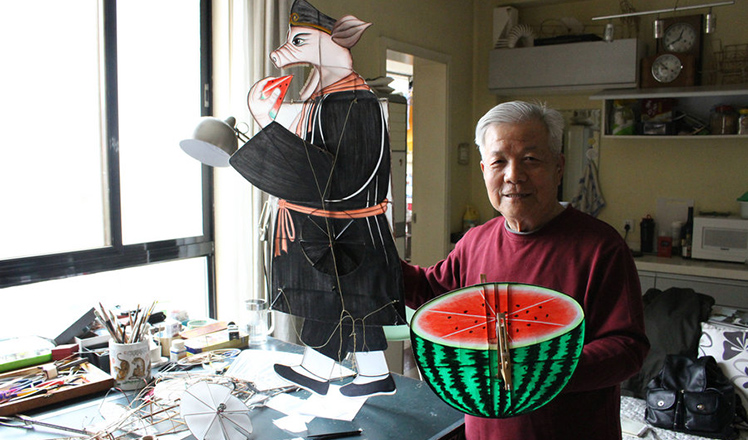Scroll with it: the Life of a thangka star Painting Buddhas can become a lifelong obsession
Updated: 2016-04-22 10:53
By Xinhua in Xining(China Daily USA)
|
||||||||
|
Sanggyaipo puts fine tuning to a giant thangka, which he has spent fi ve years on research and drawing, in his studio in Xining, capital city of Qinghai province. It will go on display in Beijing later this year.Photos By Wu Gang / China Daily |
|
Sanggyaipo depicts a Tibetan family in one section of his giant thangka to be exhibited in Beijing. |
As a boy, when Sanggyaipo was taught to write the Tibetan alphabet in school in northwest China's Qinghai province, he mischievously drew a mini Buddha with every stroke.
So began a passion for ethnic art that has led the 51-year-old to become a star of thangka, the Tibetan Buddhist scroll paintings that have become fashionable, and highly profitable, in recent years. A giant thangka he recently completed after five exhausting years of research will go on display in Beijing later this year.
Sanggyaipo's story of how he became a leading Chinese artist, pulling himself up from poverty and helping repair threatened Tibetan antiques along the way, starts in his village in the Tibetan autonomous prefecture of Huangnan, a cradle of thangka painting.
After school, he would watch the thangka masters at work and became eager to try it himself. His family could not afford to buy decent paper, however, so he plied his art on used woven bags, which he had cut into pieces.
After he finished middle school at 16, Sanggyaipo began an apprenticeship with Gyaimoco, one of the great thangka painters. He spent more than 10 years in his master's house, learning techniques and helping with the household chores in his spare time.
Sanggyaipo began to win acclaim for his art in the early 1990s, after a pilgrimage to the major Ta'er Monastery led to a lucky break that was to change his life.
The senior Buddhist who blessed Sanggyaipo asked about his profession. "He was apparently impressed when I told him I was a thangka painter. He asked me to write down my permanent address," Sanggyaipo said.
A few days later, the senior Buddhist visited his family with a job offer: to help with a state-financed project to repair murals at Ta'er Monastery.
Sanggyaipo and eight other thangka painters spent three years restoring the monastery's 36 murals. He earned about 30,000 yuan ($4,600) for the job, a considerable amount for his impoverished family.
"Ta'er Monastery was the birthplace of Tsongkhapa, the founder of the Yellow Hat Sect of Tibetan Buddhism. As I painted Buddha's scrolls, I earned my first fortune right there under his watchful eyes," Sanggyaipo said.
He spent another two decades repairing murals and thangka at monasteries in Qinghai and Gansu provinces, and the Potala Palace in Lhasa, an experience he views as a "special honor."
Throughout the years, he kept sharpening his skills. He was named head of a national thangka academy and one of his scrolls was housed at the United Nations headquarters in the United States.
Sanggyaipo's latest project, the 56-meter-long thangka headed to Beijing, has been gestating since his teacher, Gyaimoco, met the 10th Panchen Lama, the head of Tibetan Buddhism in China, during a visit to Huangnan in 1982.
"I saw my teacher was in tears when the Panchen Lama told him to preserve Tibetan culture and carry forward thangka art," said Sanggyaipo, who was 17 at the time.
He found these words inspiring, and in 2011, he decided to paint a thangka of all the Panchen Lamas from the first to the 11th. Over five years, he traveled to Tibet many times to buy the best pigments, and to India for cotton and silk, the ideal canvas for thangka scrolls.
He also followed the Panchen Lamas' footsteps to Lhasa, Beijing and Yunnan province, collecting more than 15,000 photos of the high monks. He chatted with elderly Buddhists who gave him vivid details of the lamas lives, and he and 60 other thangka painters incorporated some of these details into the painting.
Sanggyaipo hopes the work will "exhibit the charm of Tibetan art and show my respect for the Panchen Lamas."
Painting has earned Sanggyaipo a solid living, as prices for thangka have soared now that Tibetan art hangs in middle-class homes and regularly fills gift boxes. Most thangka paintings now sell for at least 10,000 yuan.
Popularity and profitability, however, are not always good for art, as thangka painters need to have exacting attention to detail, and it helps to have the spirituality of Buddhism, Sanggyaipo said.
The artist himself gets up at 6 am every day to read sutra. "It's a daily habit to help me meditate and be self-disciplined," he said.
"Many thangka works are painted too hastily these days, as if they are all done on the same production line," he said. "They lack the charm you feel with earlier works that were done in monasteries and by devout Buddhists who were expert in painting as well as Buddhist teaching."
Now that thangka painting has become lucrative, Sanggyaipo has found a growing number of young people interested in the occupation. He has taught more than 50 students to paint thangka, but said many lack the concentration and determination for it.
- Canadian PM Trudeau slips from political ring to boxing ring
- Japanese lawmakers visit war-linked Yasukuni Shrine en masse
- Palestinian residents of Gaza Strip face growing water shortage
- Delayed Yemen peace talks begin in Kuwait
- Cuba, US agree to deepen cultural cooperation
- Ecuador continues recovery efforts following powerful quake

 In pics: Top 10 richest cities in China
In pics: Top 10 richest cities in China
 Readers at a 24-hour bookstore in Beijing
Readers at a 24-hour bookstore in Beijing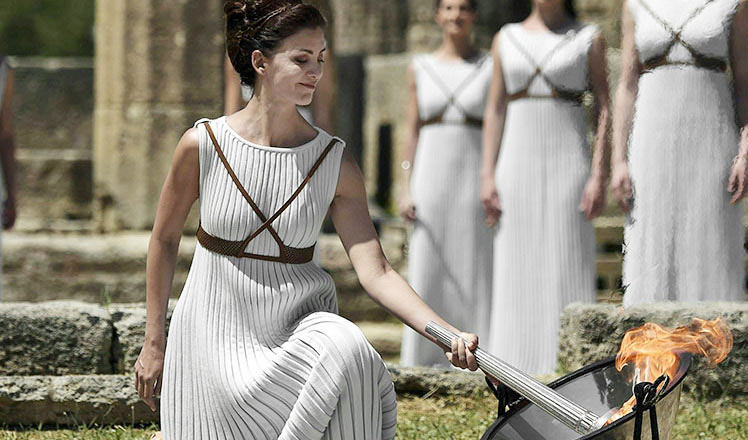
 Flame for Rio Olympics lit in ancient Greek ruins
Flame for Rio Olympics lit in ancient Greek ruins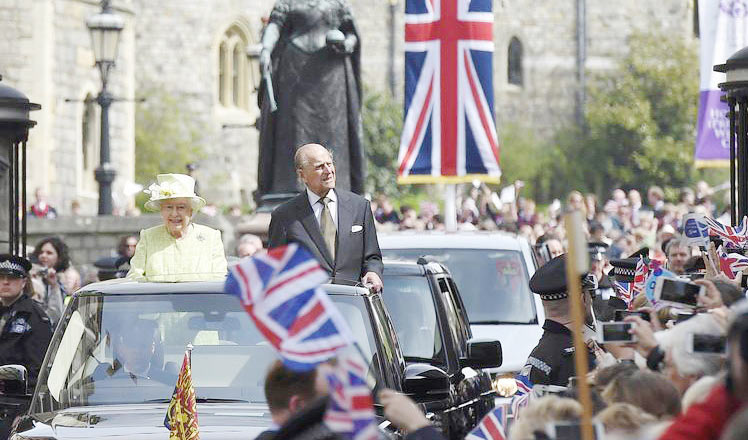
 Britain's Queen Elizabeth II celebrates 90th birthday
Britain's Queen Elizabeth II celebrates 90th birthday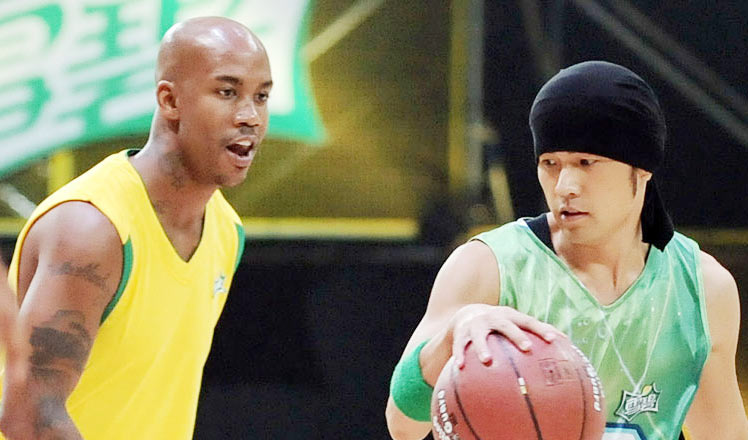
 Former NBA star Stephon Marbury's life in Beijing
Former NBA star Stephon Marbury's life in Beijing A 75-year-old kite runner in west China's Shannxi
A 75-year-old kite runner in west China's Shannxi
 $2 million hyper car crash in east China's Zhejiang province
$2 million hyper car crash in east China's Zhejiang province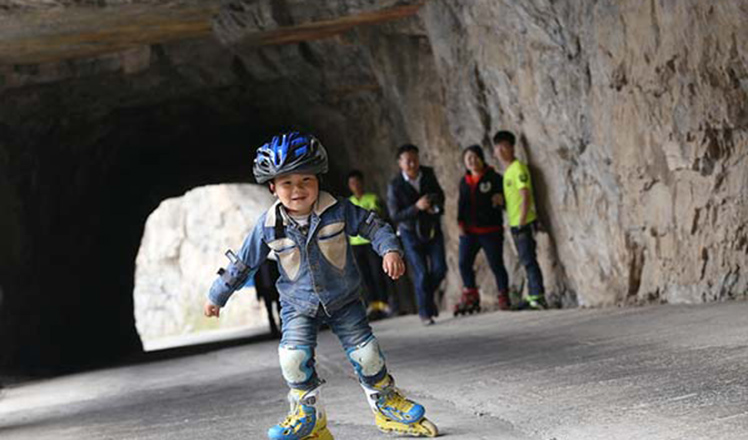
 Little champ: Four-year-old roller skates on cliff
Little champ: Four-year-old roller skates on cliff
Most Viewed
Editor's Picks

|

|

|

|

|

|
Today's Top News
Liang avoids jail in shooting death
China's finance minister addresses ratings downgrade
Duke alumni visit Chinese Embassy
Marriott unlikely to top Anbang offer for Starwood: Observers
Chinese biopharma debuts on Nasdaq
What ends Jeb Bush's White House hopes
Investigation for Nicolas's campaign
Will US-ASEAN meeting be good for region?
US Weekly

|

|
